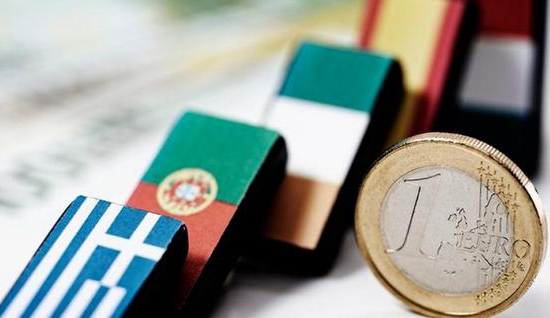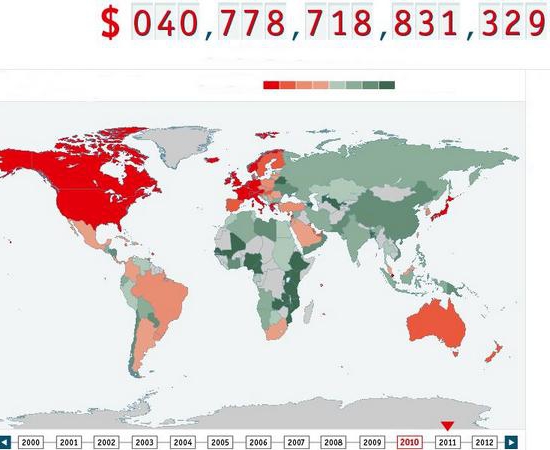Almost all states resort to external loans when carrying out economic transformations. The rational distribution and use of such loans is very helpful in solving many problems. But, due to the limited availability of own financial reserves, it is not always or insufficiently effective to use the loans received, violation of the repayment term leads to the fact that the state external debt begins to grow. Next, we consider this phenomenon in more detail.

World situation
For a rather long period, the first places in the list of the largest world debtors were occupied by such countries as Argentina, Brazil and Mexico. Recently China has been characterized by rather fast growth rates of loans. In the Asian region, South Korea, India, and Turkey remain among the largest debtors. Indonesia is also included in this list. The government debt of the Russian Federation is also considerable.
Prerequisites for loans
Regarding our country, we can say that the structure of public debt and its volume reflect economic and geopolitical problems. First of all, it is the collapse of the USSR, the crisis of the 90s. Equally important is the lack of consistency in carrying out market transformations, and complex relations with foreign creditors.
Repayment problems
Thanks to negotiations on debt restructuring, a 30% Russian loan was written off by the London Credit Club. However, relations between our country and the International Monetary Fund still remain difficult. Public debt to private companies remains unresolved. Also still relevant is the problem of repaying a loan from developing countries on loans granted during the existence of the USSR, as well as CIS members.

Forms of Obligations
There are different types of public debt. In accordance with the obligations, allocate:
- Loan agreements and agreements with relevant organizations, foreign countries and international financial corporations in favor of these borrowers.
- Agreements on the provision of state guarantees, guarantees for the implementation of obligations by third parties.
- Securities issued on behalf of the Russian Federation.
- Re-registration of borrowed obligations of third parties into the state debt of the Russian Federation based on relevant laws.
- Contracts and agreements on the reorganization and prolongation of borrowed obligations of previous years.
State and municipal debt are interconnected. With a budget deficit, available funds from legal entities and citizens in the country, it becomes necessary to turn to third-party creditors.
Loan classification
There is a separation depending on where the lender is located. If it is internal, then the debt will be appropriate. A loan may also be provided from abroad. In this case, it will be a state external debt. For a very long time, domestic lawmakers could not precisely determine this classification. In the division into types of public debt, they laid a somewhat dubious sign. It was the currency. It expressed the country's borrowing obligations. However, the events that preceded August 17, 1998, showed with certainty that the ruble loan attributable to foreign investors is not only domestic public debt.

A loan can also be current, fixed and capital.In the latter case, we are talking about the total amount of issued and unliquidated obligations of the country. Guaranteed loans from other parties, including accrued interest expected to be paid, also fall into this category. The main public debt is the nominal value of the country's credit obligations. This also includes guaranteed loans. Current government debt consists of upcoming expenses on the payment of income to creditors for all obligations assumed. This also includes the costs of repayment of those obligations, the deadline for which has already arrived.
State and municipal debt
Such a separation is carried out in accordance with existing levels of government. So, they directly distinguish the state debt of the Russian Federation and its subjects. In the latter case, we are talking about obligations issued by local (regional) government.
Public debt management
It represents a set of measures by the authorities to pay income to creditors and repay loans. Public debt management also includes changing the terms of issued obligations, determining the circumstances of the issuance of new securities. The forms in accordance with which these activities are carried out may be different. So, management can be carried out by:
- Changes in loan yield - conversions.
- Extending the validity period, making adjustments to other conditions.
- Combining one of several loans - consolidation. This measure provides for a reduction in the number of types of simultaneously circulating securities. This greatly simplifies the work and also reduces government spending according to the debt system.
- Equating several bonds of a previous loan strictly to one - exchange by regressive ratio.
- Deferred loan repayment. Such a measure is applied provided that the further development of operations related to the issue of securities does not have financial efficiency for the country. This happens when the government issued too many loans, and the terms of their issuance were not profitable enough. In these cases, a significant share of the proceeds from the sale of bonds on new loans is directed to the payment of interest on previously issued obligations.
- Debt cancellation. In this case, there is a complete rejection by the government of loan obligations. This form of government is used in cases where a coup in a country occurs with a change of power, or the state recognizes its bankruptcy.
- Restructuring loan commitments. For Russia, it is considered very important to replace expensive and short debts with cheap and long ones.
- Refinancing obligations. In this case, the previous government debt is repaid by issuing new loans.

These forms are considered general, regardless of the classification of the loan. However, domestic public debt is not so specific.
Regulation of loan obligations to foreign lenders
Excessive increase in external debt can threaten the security of the country, in fact lead to its bankruptcy. Regulation of loans of foreign lenders is carried out in three forms:
- Financial placement. This method is considered the most effective. It involves financing investment programs and developing the economy.
- Budget use. In this case, financing of expenses and the budget deficit is carried out. This also includes servicing external debt.
- Mixed placement.
In Russia, the second method is used. It is considered the most ineffective of all. Management of external debt repayments can be performed using different sources. In particular, it can be budget funds, foreign exchange reserves, conversion of obligations into shares of enterprises, as well as new loans. The latter uses the government of the Russian Federation.
Regulatory objectives
Russia begins to work on public debt servicing. In this regard, the following tasks are of prime importance:
- Loan structure optimization: by urgency, profitability, types. In particular, it is necessary to attract long- and medium-term loans, expand the range of financial instruments used and issue, take into account the ratio of foreign currency and ruble yield.
- Using programs and projects financed through tied loans.
- Conversion - exchange of debt for national currency, repurchase of a loan at a discount, exchange for export, debt, property.
- Management of external assets. It is supposed to conduct an inventory of the country's property abroad, as well as a direct return of debts and gold.
Regulation of loan obligations of domestic lenders
This public debt of Russia is coordinated through forecasting, planning, analysis and control. The regulatory principles are based on the following principles:
- Unity of accounting. It involves control over all types of securities issued by government bodies at all levels.
- Unconditioned. It is understood as ensuring timely and accurate fulfillment of government obligations to creditors and investors without setting additional conditions.
- Unity of loan policy. It involves one approach in the process of public debt management by the center regarding entities and municipalities.
- Coherence. It is about ensuring the maximum possible balance of the interests of the borrower and lenders.
- Risk reduction.
- Optimality. It is understood as the formation of such a structure of public debt so that when fulfilling obligations, risks and negative impact on the economy are minimal.
- Publicity. It involves the provision of timely, complete and reliable information about the parameters of the loan to all interested parties.

Regulatory methods
Control over how the obligations for which the Russian public debt is provided are broadly envisaged:
- Formation of an appropriate policy.
- Definition of the main indicators and limit parameters of debt.
- The formation of priority areas for the use of attracted resources, etc.
The determination of the policy and the upper limit that Russia's public debt may have is carried out by the relevant legislative bodies. These issues are regulated by executive committees. The following methods are used in public debt management:
- Refinancing.
- Conversion.
- Consolidation.
- Novation - an agreement between the borrowing country and the creditor on the replacement of circumstances under one agreement.
- Unification - a decision to combine several loans issued earlier.
- Deferral - consolidation with a simultaneous refusal to pay income on a loan.
- Default It represents a complete refusal of state power to repay a debt.
As the main loan forms a loan stands out, which is characterized by the fact that temporarily free finances held by the population, organizations and enterprises are attracted to fill the country's budget deficit through the issuance and subsequent sale of securities.
Domestic credit activity
It should be noted that Russia is not only a borrower. The credit of the former socialist and developing countries is now more than $ 120 billion. The main share of government debt in this case falls on Vietnam, Cuba, Mongolia, India, Libya, Iraq, Syria. In 1992, the Russian Federation was to be transferred $ 14.2 billion in operations to repay loans. Actual revenues amounted to about two billion dollars. The bulk of the debt is paid off at the expense of goods traditional for these countries.

These loans, issued in rubles and US dollars, are not quoted on world trading floors. This is due to the fact that the contracts indicated that all actions on them should be the subject of a preliminary agreement. Gradually funds from Argentina come, part of Vietnam paid. Repayment of the loan by India is carried out by the supply of consumer goods, cotton, tea. The entry of the Russian Federation into the Paris Club of the creditor states was supposed to help ease obligations for Vietnam, Yemen, Algeria and several other countries.
Urgency of the problem
Being the successor of the USSR, the Russian Federation assumed the obligation to service its external debt. From 1991 to 1998 the country received loans from the IMF, IBRD, EBRD and OECD countries. The total amount amounted to more than 13.6 billion dollars in the first case, 5.6 in the second, 22 in the third. The USSR had a positive reputation, being a debtor, obligations were fulfilled strictly on schedule. However, since 1992 the latter has ceased to be respected. Russia needed to pay 19.6 billion, and in fact 2.6 was received. The same thing happened between 1993 and 1995. Over the past decade, a rather dangerous tendency towards an increase in the state debt of the Russian Federation has been noted.
Despite world practice, creditors of the West did not always take into account the country's low creditworthiness. One of the most important problems is the need to achieve the settling of a significant part of the income from exporting goods to foreign banks and the return of these capital to their homeland. According to information from foreign publications, about $ 15-17 million is delayed there annually. The solution to the problem of meeting obligations on foreign debt depends largely on restoring confidence in the Russian currency and creating favorable conditions for investment. In the event that the stabilization of the ruble is carried out actively, difficulties in repaying loans by foreign lenders will also be overcome.








